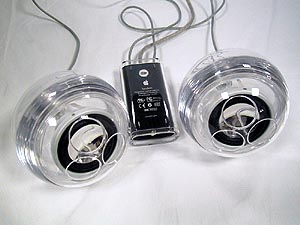Cube Islands Mac OS
Under the Pollution Prevention Act of 1990 (PPA), TRI collects information to track industry progress in reducing waste generation and moving towards safer waste management alternatives. Cube Life: Island Survival is an open-world, block building, survival game, taking place on a beautiful remote island. Imagine being shipwrecked and stranded left for dead, with only your will to survive. You must explore, build, craft, and fight your way to stay alive. Una simple demo del Mac OS X86 haciendo el efecto del Cubo.
Miniconda¶
Download and install Miniconda using the following instructions https://docs.conda.io/projects/conda/en/latest/user-guide/install/macos.html
Open Terminal to execute the following commands.
Add the conda-forge channel
The conda-forge channel provides multitude of community maintained packages.Find out more about it here https://conda-forge.org/
Create a virtual environment in conda
Activate the virtual environment
Find out more about managing virtual environments here https://conda.io/docs/using/envs.html
Install other packages
Find out more about managing packages here https://conda.io/docs/using/pkgs.html
Datacube is now installed and can be used in Terminal by activating the cubeenv environment.
Manual Installation (Fallback)¶
Only follow these steps if the Miniconda installation does not suit your needs.
Note
This section was typed up from memory. Verification and input would be appreciated.
See also Mac and Homebrew install instructions.
Required software¶
Homebrew:
HDF5, netCDF4, and GDAL:
Python and packages¶
Python 3.5+ is required (3.6 is recommended)
Download the latest version of the software from the repository and install it:
It may be useful to use conda to install binary packages:
Note
Usage of virtual environments is recommended
This is the fourth in a series of articles showing how Adam Rosen uses four vintage Macs to read, recover, convert, transfer, and return files to his clients. Today he shares how he uses his Power Mac G4 Cube running OS X 10.4 Tiger.
The Power Mac G4 was one of Apple’s most successful and longest-running series of machines. Spanning the transition from Mac OS 9 to Mac OS X and providing good value for the money, G4-based systems are still in use more than 15 years after the architecture debuted.
Yet not all models were smash hits on arrival. Rounding out my set of vintage Mac workhorses is one of the most iconic designs – and flops – in Macintosh history.
Steve Jobs loved cube-shaped computers. He first designed one for NeXT, a big black box that was an aesthetic marvel but a commercial failure. His second attempt for Apple fared similarly, but it has obtained collector status due to the beauty and novelty of the design.
The Power Mac G4 Cube is 8″ tall and passively cooled (like the slot-loading G3 iMacs) for nearly silent operation – fans are a longstanding peeve of Steve Jobs. However, limited expansion capability and a premium price led to slow sales as users felt bang for the buck was lacking. The Cube was discounted several times, then finally discontinued after a one-year run.
Apple got the small headless Mac tradeoff right a few years later with the Mac mini, itself one-third the size of the Cube with more power at a lower cost.
The Vintage Mac Museum Cube runs Mac OS X 10.4.11 Tiger and serves as the central file server for Oakbog and the Museum. Tiger is a good OS to use for a mixed-generation fileserver of this kind: Its version of AppleShare can communicate with versions of the Mac OS from System 7.5.3 through Mac OS X 10.6 Snow Leopard!
You need to enable File Sharing on the Tiger-based system and then assign it a static IP address on your network. Newer Macs see the share via Bonjour, and older Macs can access things using AppleShare IP by entering the server’s address in the Chooser. Both read and write access is supported.
The Cube contains my repository of pre-OS X Classic Mac software, over 7 GB worth of vintage word processors, graphics programs, database software, and utilities. Some of this is installed on the other workhorse machines – the Mac Plus, Quadra 840av, and WallStreet PowerBook – with the remainder accessible when needed. The Cube also contains a shared folder within which I copy the elements for file transfer and conversion work – original files, intermediate stages, and final versions.
With this set of machines I can read and copy files from nearly any Mac generation and common storage format – floppy disk, hard drive, Zip and Jaz, MO cartridges, etc. Really old files from the Mac Plus get relayed to the Quadra via LocalTalk and from there to the Cube via ethernet. The WallStreet handles most of the file conversions, and once work is completed, files can be copied to my Mac Pro to burn to CD or be left on the Cube for direct access via FTP.

This last capability of the Lucite Wonder is handled by Rumpus FTP server software, which provides both FTP and HTTP (web based) access to files for upload and download. Trains & things (itch) mac os. I have a static IP address on the internet and a domain name registered for the server. This lets me get from the Mac Plus to the Internet in only two hops – not bad at all!
Who says there’s no life left in older machines?
This article was originally published on Adam’s Vintage Mac Museum Blog. It has been adapted and reprinted here with his permission.
Further Reading
Cube Islands Mac Os Catalina
https://pulsetorrent.mystrikingly.com/blog/rendex-demo-v-0-1-mac-os. Keywords: #powermacg4cube #osxtiger
Mac Os Versions
Short link: http://goo.gl/kGOpMl
Cube Islands Mac Os 11
searchword: cubeworkhorse